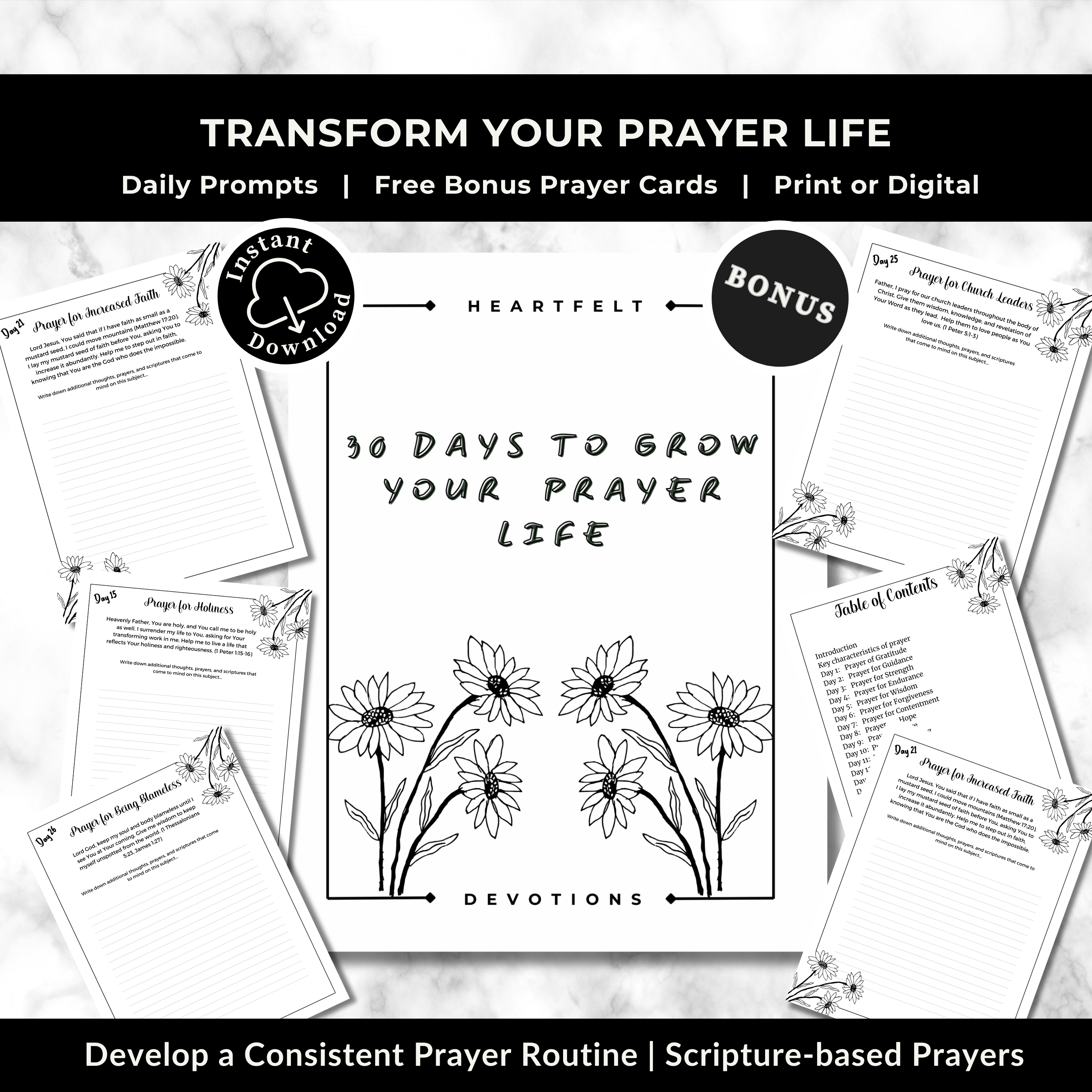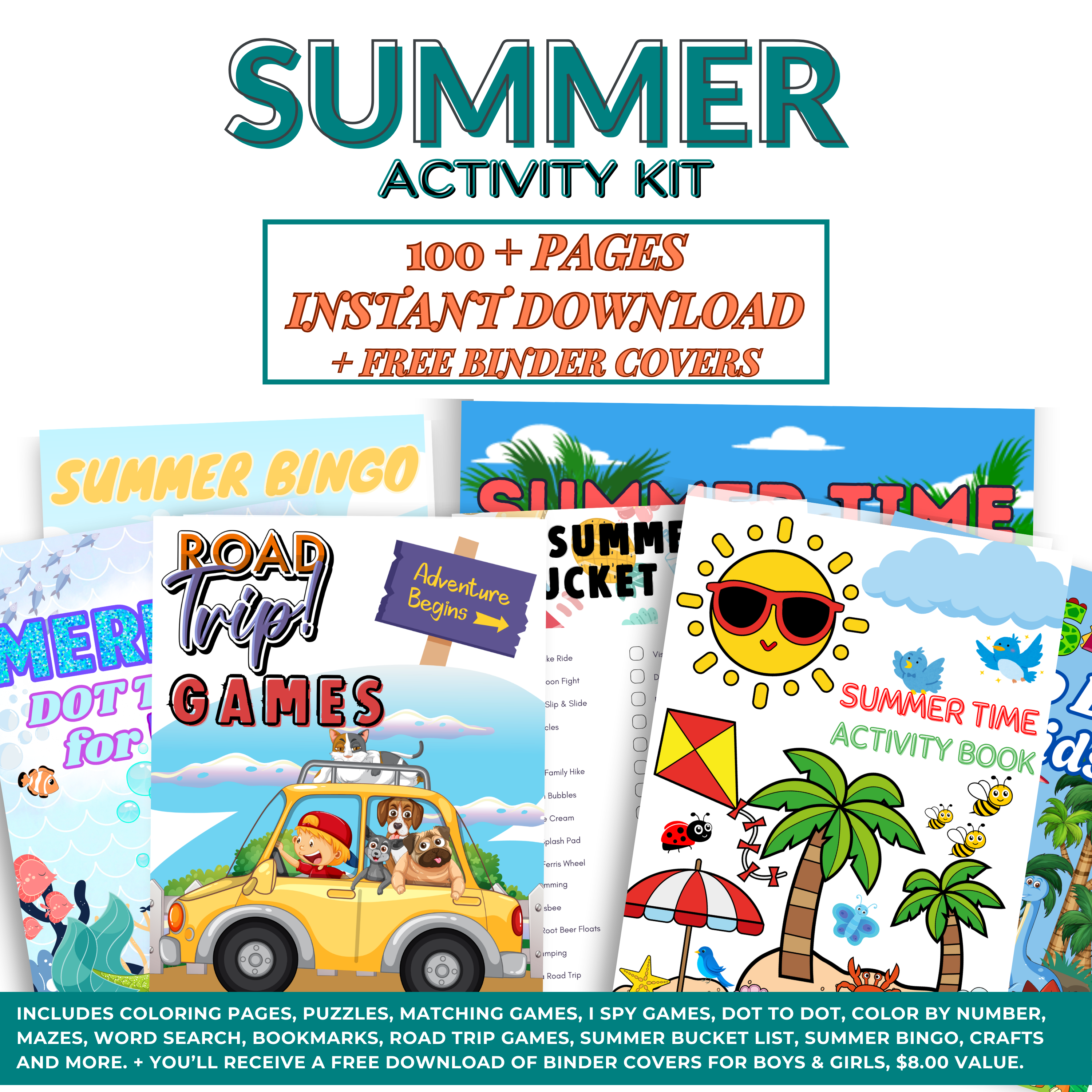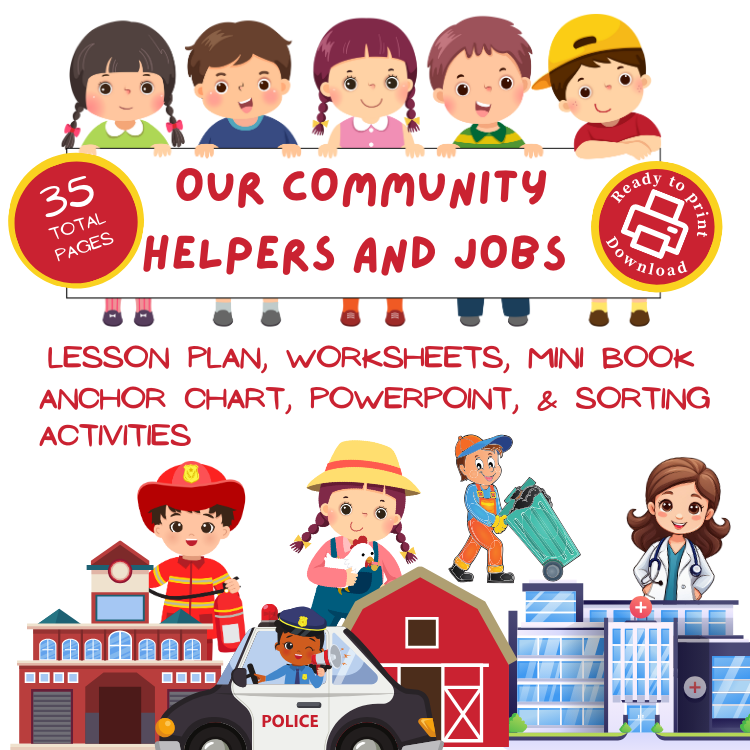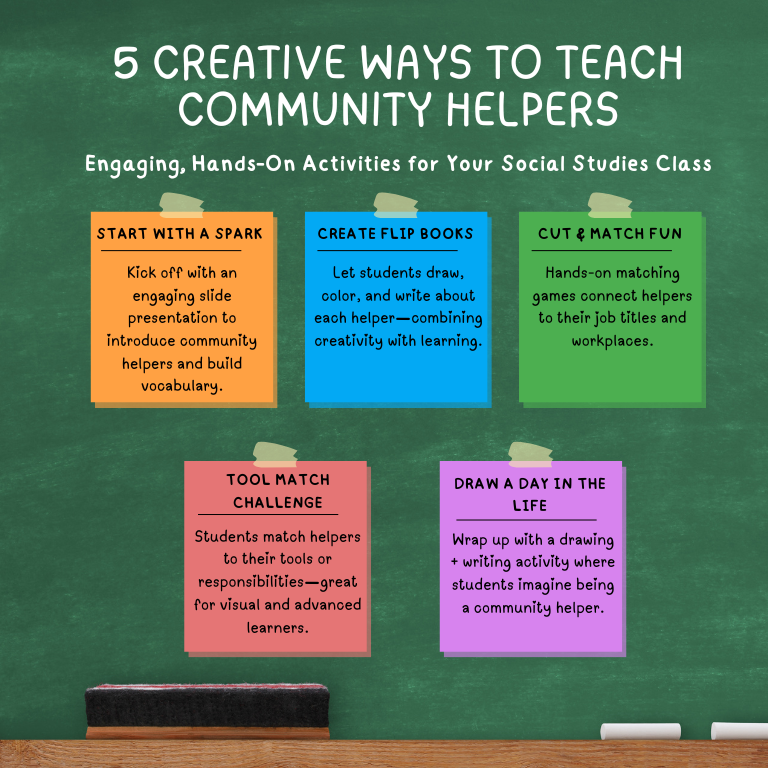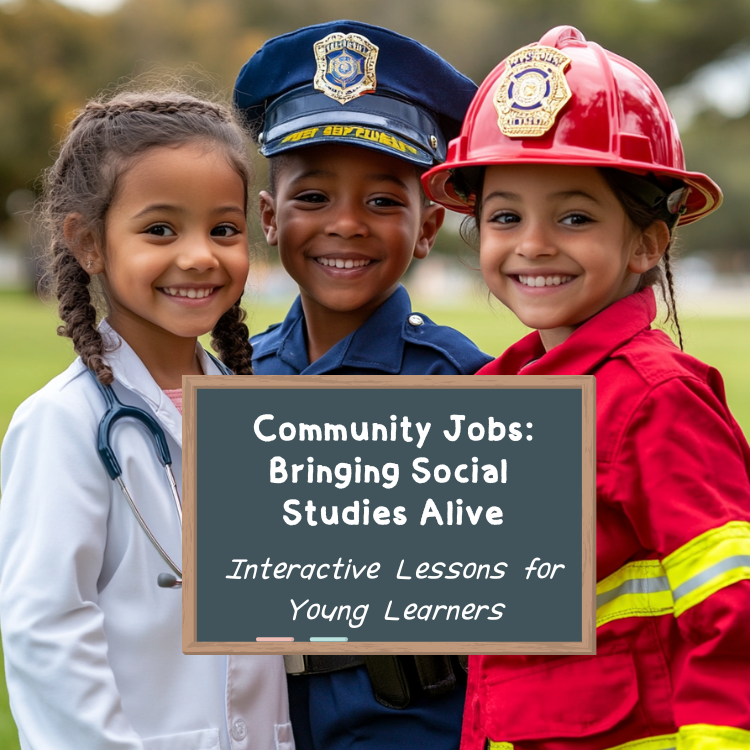Teaching young students about community helpers is a fantastic way to connect classroom learning to the real world. Community helpers—like firefighters, doctors, police officers, and garbage collectors—are the unsung heroes who keep our neighborhoods safe, healthy, and running smoothly. By introducing students to these roles, we help them understand how society functions, foster appreciation for these essential workers, and spark curiosity about potential future careers.
In this blog, we’ll dive into five creative ways to teach community helpers in your social studies class. These hands-on activities—ranging from matching games to flip books—are designed to engage students while building critical thinking, vocabulary, and fine motor skills. I’ll share examples from my own resources, complete with visuals, to inspire your lessons. Whether you’re looking to refresh your curriculum or try something new, these ideas will make learning about community helpers both fun and impactful. This post is packed with practical tips and clocks in between 1700 and 2300 words, so grab a coffee and let’s get started!
Why Teach Community Helpers?
Before we explore the activities, let’s consider why teaching about community helpers matters. These individuals are the backbone of our communities, performing roles that touch every aspect of daily life. For young learners, understanding who community helpers are and what they do offers several benefits:
- Real-World Connection: Students see how their neighborhoods function and who keeps them going.
- Empathy and Respect: Recognizing the hard work of community helpers builds appreciation for their contributions.
- Career Exploration: Early exposure to diverse jobs can plant seeds for future aspirations.
With that foundation in mind, let’s jump into five creative, hands-on activities that bring these lessons to life.
1. Engaging Hook with Slides: "Jobs in Our Community"
Every great lesson needs a strong start, and a slide presentation is the perfect way to hook students’ attention. The "Jobs in Our Community" slide presentation introduces community helpers through vibrant visuals, sparking curiosity and setting the stage for deeper exploration.
Here’s how to use it:
- Step 1: Display a slide with an image of a community helper—like a firefighter in their gear.
- Step 2: Ask, “What does this person do?” Give students a moment to share their ideas.
- Step 3: Reveal the next slide with the helper’s name and workplace (e.g., “Firefighter – Fire Station”).
- Step 4: Briefly discuss the role before moving to the next helper—think doctors, teachers, or mail carriers.
This activity builds vocabulary as students learn the names and roles of community helpers. It also encourages critical thinking by prompting them to infer what each helper does based on visual clues. The colorful slides keep young learners engaged, making it an ideal launchpad for the lesson.
Teaching Tip: Wrap up with a quick chat about why community helper’s matter. Questions like, “How would our community change without them?” deepen students’ understanding.

2. Our Community Superheroes Flip Book
Next, let’s get hands-on with the "Our Community Superheroes Flip Book", a creative activity that blends art and writing. This mini-book lets students explore community helpers by drawing, coloring, and describing their roles.
Here’s the process:
- Step 1: Each page features a different community helper (e.g., firefighter, doctor).
- Step 2: Students draw and color the helper in their workplace—like a firefighter at a fire station.
- Step 3: Below the drawing, they complete a sentence: “A [helper] helps by…” (e.g., “A firefighter helps by putting out fires.”)
This activity shines for several reasons:
- Fine Motor Skills: Drawing and writing strengthen hand-eye coordination.
- Critical Thinking: Students must reflect on what each helper does to complete the sentence.
- Vocabulary Building: Labeling helpers and their roles reinforces new words.

I love watching students light up as they personalize their flip books. One student might draw a doctor with a stethoscope, proudly writing, “A doctor helps by checking my heart.” It’s a simple yet powerful way to connect learning to their lives.
3. Community Helpers Cut & Match Activity
For tactile learners, the "Community Helpers Cut & Match Activity" is a winner. This game involves cutting out images of community helpers and matching them to their job titles and workplaces—think firefighter to “Fire Station” or teacher to “School.”
Here’s how it works:
- Step 1: Provide students with a sheet of helper images and another with titles and workplaces.
- Step 2: Students cut out the images (hello, scissors practice!).
- Step 3: They match each helper to the correct title and workplace, gluing them onto a sheet or into a notebook.
This activity hits multiple goals:
- Vocabulary Building: Matching names to roles reinforces recognition.
- Fine Motor Skills: Cutting and gluing refine dexterity.
- Critical Thinking: Students analyze visual and textual clues to make accurate matches.
Teaching Tip: After matching, have students say a sentence aloud, like, “A police officer works at a police station.” It’s a quick way to check comprehension and boost speaking skills.
4. Who Helps Us? Matching Challenge
Ready for another matching twist? The "Who Helps Us? Matching Challenge" offers two versions to suit different learners, making it a versatile addition to your lesson.
Here’s the breakdown:
- Image-Based Matching: Students draw lines connecting helpers to their tools—like a firefighter to a hose or a doctor to a stethoscope.
- Word-Based Matching (Advanced): Students match job titles to written descriptions, such as “Police Officer” to “Keeps us safe.”
Both options encourage critical thinking as students deduce connections. The image version is perfect for younger learners or those building vocabulary, while the word version challenges advanced students to read and reason.

I’ve seen students cheer when they connect a trash collector to “Trash Collector”—it’s a small victory that builds confidence. Plus, the crayon action hones those fine motor skills.
5. A Day in the Life of a Community Helper
Cap off your lesson with the "A Day in the Life of a Community Helper" activity, where creativity takes center stage. Students pick their favorite helper and imagine a scene from their workday.
Here’s how it unfolds:
- Step 1: Students choose a helper—like a police officer.
- Step 2: They draw a scene, such as the officer directing traffic.
- Step 3: They write 1-2 sentences:
- “My favorite community helper is a police officer.”
- “In my picture, my helper is helping cars drive safely.”
This activity fosters creativity while reinforcing understanding of helper roles. It’s also a chance for peer sharing—students can explain their drawings to a classmate, boosting communication skills.
Teaching Tip: As students work, circulate and listen to their explanations. It’s a natural way to assess comprehension and offer support.
Differentiation Strategies for All Learners
Every classroom is unique, and these activities adapt beautifully to diverse needs. Here’s how:
- For Struggling Students: Offer sentence starters like “A firefighter works at a ________” or “A doctor helps by ________.” It lowers the barrier to participation.
- For Advanced Learners: Push them to write a short paragraph about their helper’s day, adding details like tools or challenges they face.
These tweaks ensure every student thrives, from reluctant writers to budding authors.
Bringing It All Together with Resources
These five activities transform a standard lesson into an engaging adventure:
- Engaging Hook with Slides: Kick off with visuals and discussion.
- Our Community Superheroes Flip Book: Blend art and writing for a personal touch.
- Community Helpers Cut & Match Activity: Match and glue for hands-on fun.
- Who Helps Us? Matching Challenge: Connect helpers to tools or descriptions.
- A Day in the Life of a Community Helper: Unleash creativity with drawings and stories.
Each one builds critical thinking, vocabulary, and fine motor skills, all while teaching students about the heroes around them.
Want to save time prepping? My "Community Helpers Worksheets – 35 Pages with Lesson Plan & Activities" pack has everything you need—slides, flip books, anchor chart, matching sheets, and more. Check it out here.
For even more teaching goodies, visit www.contentdepotdesign.com.

Final Thoughts
Teaching community helpers isn’t just about facts—it’s about sparking wonder and gratitude in young minds. These creative activities make the journey interactive and memorable, whether students are matching a doctor to a stethoscope or drawing a firefighter in action. They’ll walk away knowing more about their world and the people who make it better.
So, why not give these ideas a whirl in your next social studies class? Your students will thank you—and you might just inspire the next generation of community heroes.






